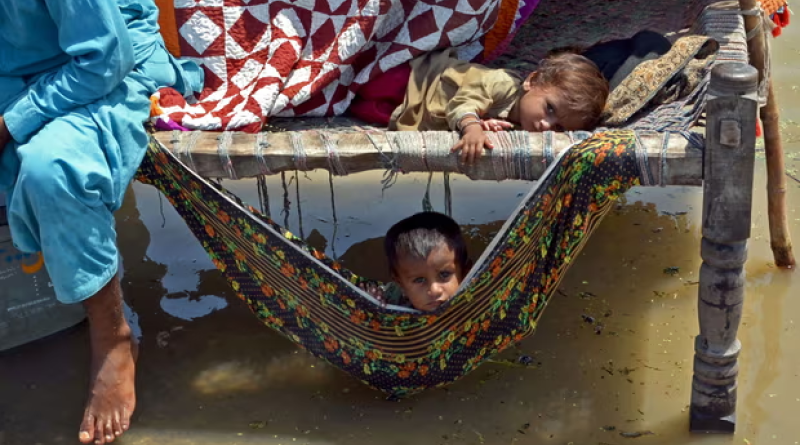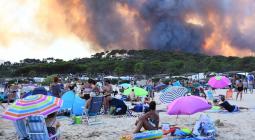A year on, the devastating long-term effects of Pakistan’s floods are revealed

Country’s health and economy ruined as Islamic charity says rich nations must compensate those suffering worst of climate crisis
A year after Pakistan’s worst floods in living memory, a report by Islamic Relief Worldwide has revealed the devastating long-term impact on people, especially children, and argued that rich nations must compensate those countries most affected by the climate emergency.
Researchers from Islamic Relief who talked to people in the flood-affected areas found 40% of the children they surveyed had stunted growth and 25% were underweight as families struggle to access food and healthcare. About 80% of mothers reported sickness among children, with outbreaks of diarrhoea, malaria and dengue fever increasing.
Women and girls reported being particularly affected, with pregnant women still struggling to access health services and girls most likely to be underweight. Many of the women displaced by the flooding do not have the privacy to breastfeed, meaning poorer health for their babies.
The flooding in Pakistan in August and September 2022 – described by UN secretary general António Guterres as a “monsoon on steroids” – led to the deaths of more than 1,700 people and 33 million losing their homes, land or jobs. About 800,000 cattle and other livestock perished and 28,000 schools and health clinics were damaged.
Speaking at the launch of the report in Islamabad, Waseem Ahmad, chief executive of Islamic Relief Worldwide, stated: “No amount of financial aid can compensate those who have lost loved ones and seen their homes and everything they own destroyed. But we need to see climate justice, where the biggest polluters pay for the damage and destruction caused by climate change.
“As climate-related catastrophes increase, it is the poorest and most vulnerable people who bear the brunt of the suffering. They are the ones most likely to live in fragile homes and least likely to have savings to fall back on, or assets to sell, or any kind of ‘Plan B’ when floods hit and crops and livestock are wiped out.”
Pakistan is one of the countries most vulnerable to changes in the climate with its farming sector particularly exposed to extreme weather conditions. The world’s sixth most populous country was responsible for just 0.88% of global emissions in 2020 – less than one-eighth of the US’s per capita emissions and one-third those of the UK. The report called for Pakistan to be a priority for increased climate financing.
A team of 26 researchers from 20 institutions who studied last year’s floods concluded that the 60-day rainfall across the region was about 50% more intense than it would have been under unchanged climatic conditions.
Islamic Relief’s report, Towards a Resilient Pakistan: Moving from Rhetoric to Reality, said agricultural output had declined significantly this year due to the loss of cotton, date, sugarcane and rice crops. Growing numbers of rural people are forced to migrate to towns and cities in search of work. The country’s economy is in tatters with external debt soaring to $125bn (£98bn), inflation reaching a record 38% and a further 6 million people pushed into poverty.
Children in Balochistan province caught up in the Pakistan floods last year. UN secretary general António Guterres called it a ‘monsoon on steroids’. Photograph: Fida Hussain/AFP/Getty Images




